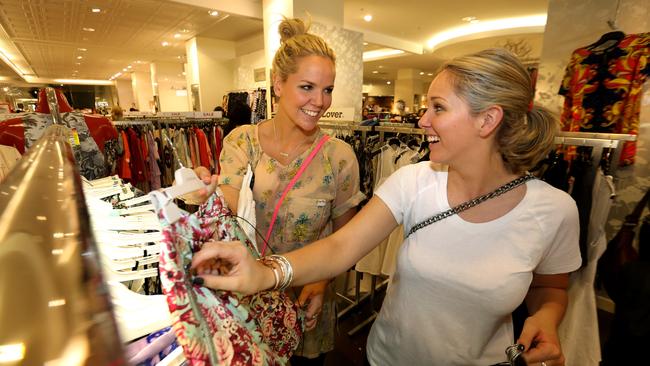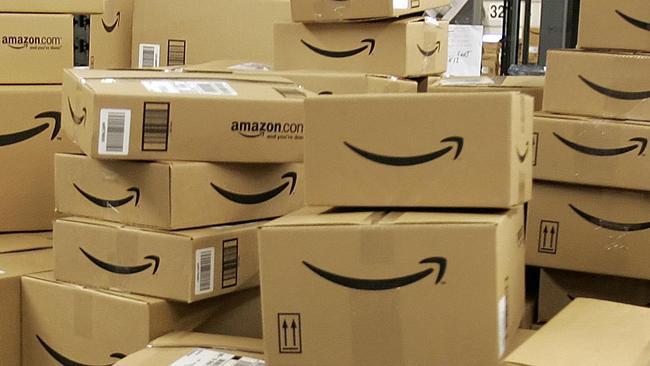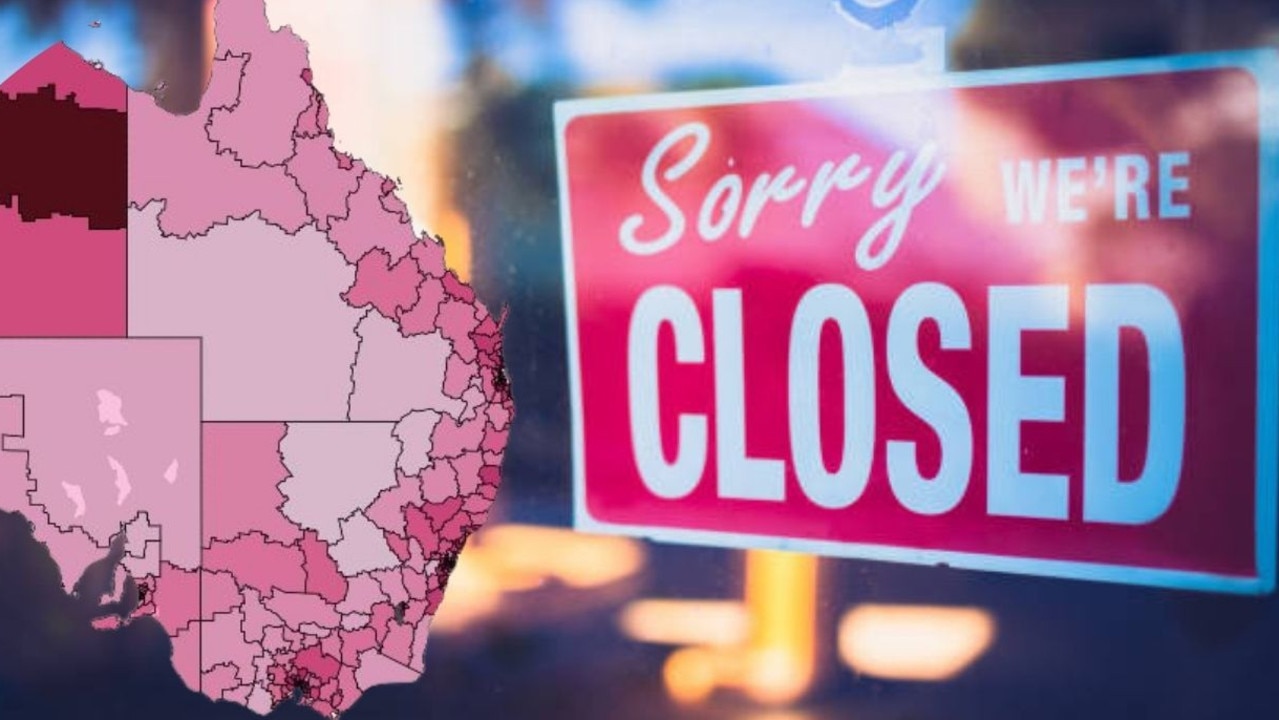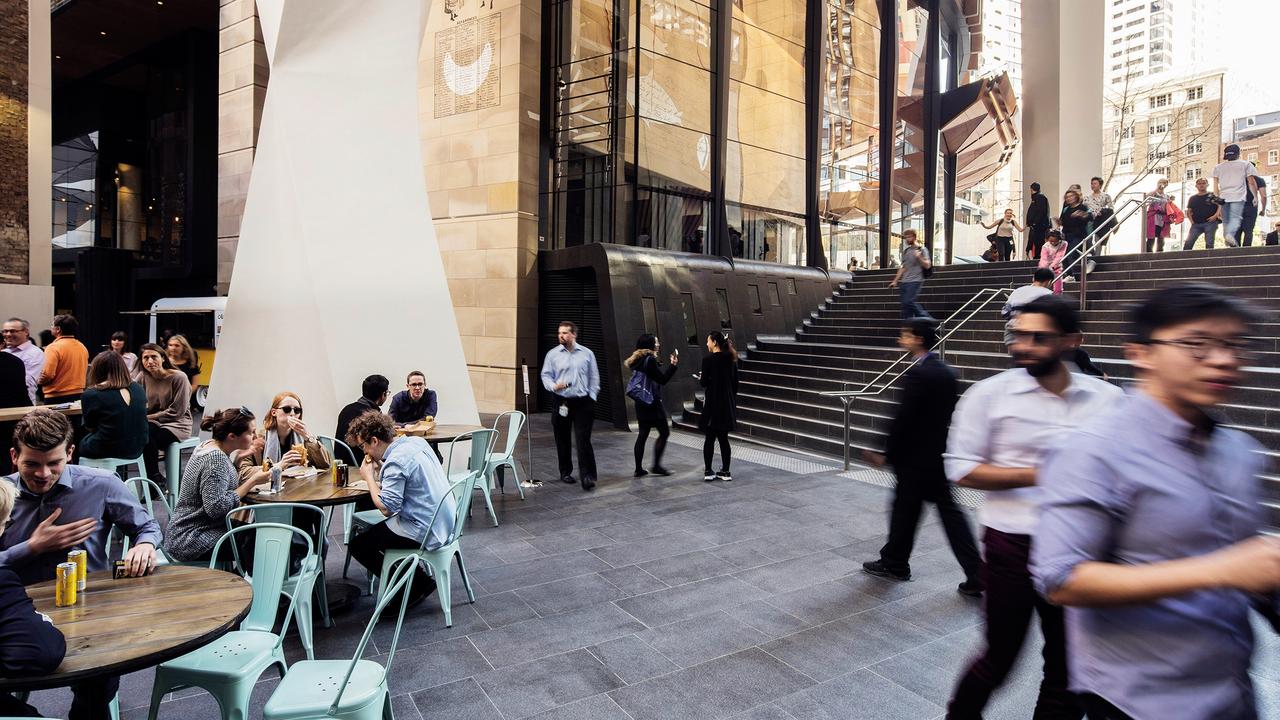Retail slump amid low wage growth and job insecurity
Plenty of customers are coming into stores to browse, so why aren't they buying the merchandise?

Two young women, friends, are shopping in the central business district, and with the winter chill starting to bite there is plenty of prominent new fashion in the stores to catch their attention — as well as capture their credit cards.
They look, they even may try on a new coat, but ultimately they walk out without spending anything. Much better to save their money for experiences rather than spending it on clothes — a night out with friends, brunch on a weekend. And there are all those pesky bills to pay: rent, electricity and that Netflix account due at the end of the month.
This picture is playing throughout Australia’s popular shopping strips and glitzy shopping malls: plenty of people looking but not buying, window shopping but keeping well away from the till.
There is something rotten in the state of retail, the mighty $300 billion pillar of the economy that keeps more than 1.2 million people in jobs, and it is threatening to bring down the national economy unless consumers shake off whatever has them so glum and resistant to spending a dollar.
Just how bad is it? Well, economists are not prone to exaggeration: they tend to couch their descriptions of the economy in fairly tepid terms. So when National Australia Bank chief economist Alan Oster says he is “really worried” about the retail sector, it’s an admission that should be taken seriously.
“We are quite worried about what we are seeing in the retail space: in our business surveys, retail, particularly discretionary retail, is the worst of any sector we have got,” he tells The Australian.
“And because retail makes up one-third of all consumption — and consumption is two-thirds of the Australian economy — and employs a lot of people, it is never good to have a downturn in that sector because that will flow on to elsewhere in the economy.”
That contagion has already spread. The first cracks started to appear less than three weeks before Christmas when the release of national accounts showed the Australian economy had hit the skids, with the worst quarterly economic growth since the global financial crisis.
Economic growth had slowed to a decline of 0.5 per cent in the September quarter, marking the first contraction in growth since March 2011, and only the fourth quarter in the past 25 years that the economy has contracted.
The came a series of high-profile retail collapses, starting with Payless Shoes, the nation’s biggest independent shoe store, just two weeks out from Christmas, following the demise of children’s fashion chain Pumpkin Patch and Howards Storage World.
In the new year, fashion retailers David Lawrence, Marcs, Herringbone and Rhodes & Beckett all collapsed — and last month the Australian business of British youth apparel outfitter Topshop/ Topman went into voluntary administration.
The high-profile collapses have prompted the nation’s publicly listed retailers to warn of a severe downturn in trading conditions that has seen profits evaporate for diverse retail chains including up-market handbag store Oroton, Australia’s largest specialty athletic and casual footwear retailer Athlete’s Foot and bargain basement store The Reject Shop. It has been the worst start to the year for retail stocks since 2008.
When businesses such as Pumpkin Patch and Payless Shoes die, Ferrier Hodgson senior partner James Stewart administers their last rites. As a corporate undertaker, or administrator to failed companies, Stewart has presided over some large retail collapses including consumer electronics chain Dick Smith, bookshop Borders and, fresh in his inbox, Topshop.
With 30 years of experience in corporate restructures and burials, he believes the retail sector is showing signs of acute stress driven partly by a reluctance on the shoppers to spend.
“I just think the market remains competitive, and I’m not convinced that consumers are spending with the same amount of gusto they had maybe in previous times,’’ Stewart tells The Australian.
“Rising sales obviously hide a lot of sins and when a market is a bit more competitive it obviously leads to a bit more of an exposure issue for these retail models.”
The economic backdrop is indeed stark. Retail spending has slumped, with three of the past four months recording month-on-month falls for the first time in almost six years — sending the year-on-year pace of retail sales to just 2.1 per cent in March, its slowest since mid-2013.
Given the pessimism, it was natural for economists and business leaders to expect another depressing slump in national retail sales for April, but figures showed a surprising 1 per cent jump for the month.

However, the stronger-than-expected rebound in retail sales did little to reduce the sector’s gloom, with surging sales activity in Queensland off the back of Cyclone Debbie helping to lift national retail trade and mask the reality of a sector in dire stress.
The impact on the broader economy of a struggling sector is obvious when you consider retail makes up 4.5 per cent of the gross domestic product.
NAB warns in a recent consumer spending report that it expects consumption growth of about 2 per cent in 2016-17 and 2017-18, before a modest improvement to 2.2 per cent in 2018-19 — which is more pessimistic than recent Treasury estimates.
“This is notably softer than Treasury’s forecast used in the latest commonwealth budget, mostly due to our weaker wages growth outlook, but also reflecting our expectation for higher levels of consumer caution — prompted by very elevated levels of household debt,” NAB says.
A deep dive into consumer behaviour by NAB shows shoppers are anxious about several key lifestyle issues including job security, the cost of living and government policy.
“I suspect that consumers are still not completely convinced that things are OK … it’s a combination of wages not being great and the unemployment rate is not great, particularly when you look at underemployment and you add those people working less or (who) have given up looking for work, so I think basically people are feeling scared,” NAB’s Oster says.
According to NAB, women aged 18 to 29 are showing the highest overall anxiety among consumers, as well as shoppers with income of $50,000 to $75,000 a year, divorcees and those living alone.
While spending on new clothes seems to have dropped down the list of priorities for shoppers, other areas where consumers are most prepared to spend “much less”, according to the NAB survey, included transport (taxis, Uber and so on), takeaway food, fitness and alcohol.
They are least prepared to curb their spending on the internet and mobile phones.
Overburdened with costly shop leases, rising energy bills and complex wages and penalties rates, the nation’s retailers also are seeing their sales slowly leak to much more nimble online players — many of whom don’t have the legacy of bricks-and-mortar shopfronts to support and can run a retail website with a skeleton staff.
The latest NAB Online Retail Sales Index reports a slight decline in online sales for April, down 0.8 per cent, to match the general decline in trading conditions, but the channel is still a growing force in retail, with the bank estimating Australian consumers spent $22.37bn online in the 12 months to April.
This is equivalent to 7.3 per cent of total spending at traditional bricks-and-mortar retailers, and is expected to extend to 10 per cent across the long term as shoppers migrate online, fuelled by the spread of smartphones, shopping apps and wider acceptance among consumers of the concept of shopping from home.
The threat to mainstream retailers is obvious. An Ernst & Young report on the future of the retail sector predicts online retailing turnover will hit $40.4bn in 2020, sparking a significant restructure of the entire industry.
It predicts 33,400 jobs will be redeployed to domestic online platforms but that 57,200 jobs will be lost to overseas foreign online sites. “With foreign online continuing to grow at a faster rate than total retail and domestic online, its share of the total market will increase,’’ the Ernst & Young report says.

And nothing looms larger or casts a greater shadow over traditional retailers than the US retail giant Amazon, with its huge market capitalisation of more than $500bn and recently unveiled intentions to launch into the Australian market.
To get a sense of the magnitude and disruptive power of Amazon, consider that in the US last year this company alone was responsible for more than half the growth in online sales. For every new dollar Americans spent online in 2016, US53c landed in Amazon’s pocket.
This is the power that will soon land in Australia — Amazon has registered local trademarks for its AmazonBasics brand and a basket of other Amazon labels — and has the potential to strip hundreds of millions of dollars in earnings from traditional retailers such as Myer, JB Hi-Fi, Kmart and Harvey Norman.
Former David Jones boss Paul Zahra, now a global retail adviser with PwC, says the retail sector is stuck in a pincer, pressured by stagnant household income growth on one side and shoppers becoming judicious with their purchasing choices on the other.
“Consumers are facing significant pressure on the family budget as low wage growth takes its toll coupled with increased living expenses. In addition to this, consumers are increasingly becoming savvier with their spending by researching for the best deal,” Zahra tells The Australian.
“The globalisation of retail also continues and competition for the customer dollar is coming from increasingly diverse channels.
“To not just survive but thrive in the new environment, retailers must do three things: have a seamless omni-channel presence, be a global entity and, most importantly, have a unique value proposition.”
This malaise within the discretionary retail sector is also starting to affect shopping centre landlords, with big mall owners such as Stockland and Westfield taking note of the downturn in consumer expenditure on traditional retail and increasing the number of restaurants, cafes and food stalls in their centres.
Stockland commercial property boss John Schroder told investors at its first-half results in February the shopping centre owner was responding to the switch in consumer spending by adding fast casual dining outlets, which would assist its growth.
The failure of so many retailers has knocked around shopping centre rents, with Stockland saying at its first half-year results that the growing number of retail chain collapses affected about 1.5 per cent of the gross rent roll, of which 80 per cent had already been replaced — with an increase in food retailers.
“In some instances it’s actually triggered a faster review of the mix and remerchandising to better fit the consumer demand,” according to Schroder.
Marketing Focus boss Barry Urquhart, a veteran of the retail industry and a consultant to retailers and shopping centres, believes consumers are mired in a “recessionary attitude” and this is playing out in the retail sector as chains collapse and profits dive.
“More particularly they are also aware that they can wait, time is on their side, and that is really the issue with the recessionary situation. Consumers are saying, ‘I’m not secure in my job, I’m not secure in my income capacity, so therefore if I do have money I am best to put that into the bank and leave it there because there will be sales, deals, coming.’ ”
And this mindset is only strengthened by the desperate acts of retailers, who are hitting the “sales” button and aggressively discounting to lure back their customers — which serves only to reinforce in the mind of shoppers they can always wait for the next sale, or that another discount will be around the corner.
In the short term, fashion and apparel retailers are praying the recent cold snap across southeastern Australia will continue, driving consumers to the stores to fill up their wardrobes with coats, scarfs, hats and jackets.
The retail sector category dealing in homewares desperately needs the housing boom to continue, with the “wealth effect” of rising property prices helping sales of bright kettles, those toasters with dozens of unnecessary settings, snazzy benchtop cooking equipment and garden furniture.
But with Australia narrowly dodging the first leg of a recession last week with GDP growth that, was only slightly above negative and Western Australia and parts of Queensland most likely already in a recession, those prayers won’t be enough.
The sales don’t work, aggressive discounting isn’t working and shopping centres risk becoming ghost towns.
The economy and consumers need a good, strong dose of confidence. They need a reason to spend, and with millions of jobs reliant on the retail sector, it may well be the patriotic thing to do.





To join the conversation, please log in. Don't have an account? Register
Join the conversation, you are commenting as Logout